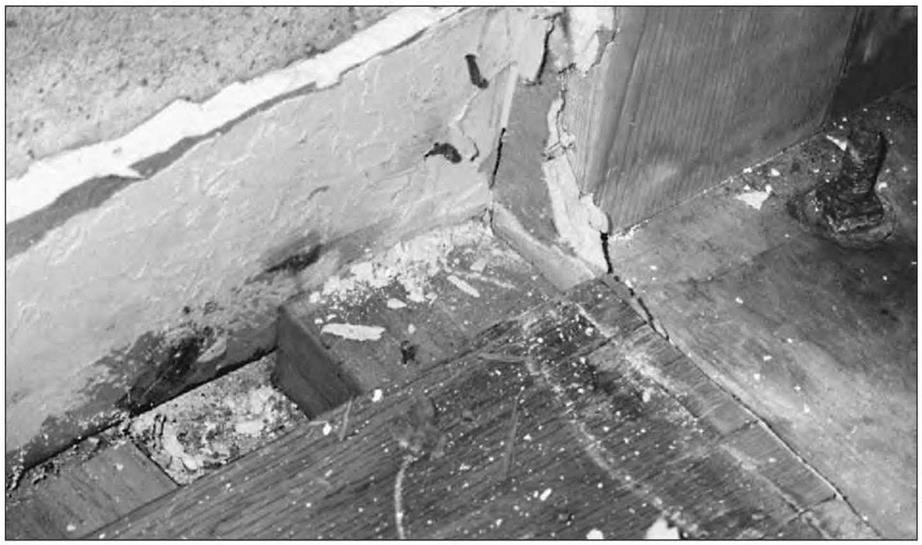Chronic Illness from Repeated Low-Level Pesticide Exposure
E. Merriam is a 59-year-old woman who complained of frequent flu-ІІке symptoms after beginning employment at a new location. Symptoms seemed to recur every month and were especially severe over the winter. Conventional medications were of no benefit. After two years of watching her health decline, she discovered that the building in which she worked was being treated prophy – lactically one weekend a month with a pesticide that contained an organophosphate called Durs – ban. Associating her flu-ІІке symptoms with the monthly pesticide applications, she felt she could no longer continue to jeopardize her health and left her job. Three years later, she finally regained her health but she remains sensitive to petrochemicals.
Discussion
In December 2001, the EPA partially banned the organophosphate Dursban for indoor use because of overwhelming evidence of harm to humans and wildlife. But, in spite of its acknowledged extreme toxicity, it can legally be used until stockpiles run out. Outdoor use, including agricultural applications, is still permitted.
Chlorpyrifos is the active ingredient in many pesticide products, including Dursban. Organo- phosphates are known to be neurotoxic and can cause damage to the brain and central nervous system, resulting in learning, memory, and behavior problems. They can also damage the immune system, increasing the risk of severe allergies, chemical sensitivities, and cancer.
10 includes a discussion of pest management that emphasizes preventing pest invasions through the use of physical barriers and the control of moisture, which eliminates potential food sources.
Electromagnetic energy is ubiquitous. Some electromagnetic waves, such as sunlight, are natural. Other fields, such as radio and television waves, microwaves, and power line frequencies, are generated by human activity. Scientists classify electromagnetic waves according to frequency, which corresponds to the wavelength. At one end of the spectrum are the infinitesimally short, high-frequency gamma rays. At the other end are long, extremely low-frequency vibrating waves that may stretch for thousands of miles and are used by submarines for underwater communication.
The magnetic field that envelops the Earth produces a steady, nonoscillating direct current at 7.83 cycles per second, or 7.83 hertz, similar to that of the human body. This current pulsates on and off, but the electrons producing the electricity always move in a single direction. Each cell in the body has a pulsating vibration with an associated electromagnetic field (EMF). Communication between cells in the body is a function of electrical charges. These charges generate electrical currents that govern many of the body’s major functions, such as heartbeat, nerve conduction, and transport across cell membranes. These natural fields pulse on and off but do not oscillate.
Manufactured fields oscillate back and forth. Unlike natural current, the electrons
 |
creating the fields change direction and thus are called alternating current (AC). The electrical power grid operates at 60 hertz and simultaneously produces an electric and a magnetic field. Each field has distinct properties and is measured separately using different meters. Common sources of 60 hertz electromagnetic fields include power lines, electrical wires, electric blankets, fluorescent lights, televisions, and other household appliances.
Radio waves are a form of electromagnetic field. On a typical radio receiver set you will find a dial, known as a frequency tuner, used to change stations. As you move the dial to the higher numbers, you are increasing the frequency of the radio electromagnetic field you are seeking; when you move the dial to lower numbers, you are reducing the frequency. AM radio stations are found between 550 and 1600
kilohertz (550,000 and 1,600,000 hertz). If the radio could be tuned all the way down the dial to 60 hertz, you would be listening to the (very noisy) sound of electrical equipment.
There are major differences between radio waves and the electrical waves used to power equipment. One difference is that radio waves are broadcast through the air; they are wireless and can travel for extended distances. Electricity, on the other hand, is transported through wires. It would be ideal if the fields from wiring systems stayed in the wires while the electricity is transported from one place to another. The problem is that wires “leak.” They broadcast electromagnetic fields, with the distance dependent on amperage. Amperage is analogous to the volume at which electric fields are being transmitted through the wires.
Assume that a radio receiver could be tuned to radio stations operating between 40 and 80 hertz. As mentioned previously, if you were to tune the dial to 60 hertz, you would hear a lot of noise because electricity in the United States operates at 60 hertz. Next, assume that you take the same radio receiver to Europe. Upon tuning the radio to 60 hertz, you would hear nothing because the European power system operates at 50 hertz.
To experiment with the sound of electricity, take a cheap AM transistor radio and tune it between stations at the low end of the dial. By holding the radio near an operating electrical appliance or a dimmer switch, you will pick up static. The buzzing noise you hear is not the 60 hertz frequency but rather higher frequency interference created by the 60 hertz frequency. Before meters for measuring elevated electromagnetic fields were readily available, some people would use an AM radio to obtain a rough idea of whether an area contained elevated manufactured electromagnetic fields. The method is far from foolproof, but it was certainly better than nothing. Several models of inexpensive meters are available today that provide more accurate assessments.
Many scientists agree that electromagnetic fields have biological effects, but they disagree on the exact effects and whether they are harmful. Research has indicated that magnetic fields can induce a small electrical field inside the body, which in turn creates an electric current in and around the cells.14 This current has been thought to alter the function of cell chemistry and to inhibit or enhance cell growth. Although there is no consistent dose/ response relationship between magnetic fields and cancer, experiments on laboratory animals have shown that magnetic fields cause changes in protein synthesis and hormone levels.
Studies in Europe have indicated that exposure to varying levels of electric fields can contribute to nervous disorders such as insomnia, depression, and anxiety. One US study found an increase in aggressive behavior among baboons exposed to electric fields.15 Other studies have indicated that there maybe a synergistic influence between magnetic and electric field exposures, making the combination more harmful than exposure to either field alone.
Over the past 50 years, people have been exposed to ever increasing amounts of manufactured radiation. The long-term consequences of this exposure are not clearly understood. Millions of Americans are now unwittingly engaged in long-term experiments on themselves. Whereas Sweden and Switzerland have set national limits for certain types of electric and magnetic field exposure, the US government has not. From time to time our government has officially recommended “prudent avoidance” (without defining the levels it would be prudent to avoid). Yet epidemiological studies have linked elevated child leukemia risks to exposures as low as 4 milligauss.16 Given the potentially dangerous (albeit controversial) consequences of EMF exposures, coupled with the ease of reducing these exposures in new construction, it may make sense to explore strategies for EMF reduction when planning and building a new home. Several simple and inexpensive measures to reduce EMF exposures are explained in Division 11 (in the sections on appliances and electric and magnetic fields) and in Division 16.
Curiously, the magnetic portion of the electromagnetic field is indirectly prohibited by the National Electrical Code. The code specifically prohibits net current, or current that is uncanceled, because it creates heat and is a potential fire hazard. Net current is also what creates magnetic fields, although most electricians are not aware of this. When magnetic fields are found in wiring, this usually is the result of a wiring error that violates code. Preventing magnetic fields caused by wiring is simply a matter of introducing protocol on the jobsite that ensures a building has been wired to code.
Naturally Occurring Pollutants
Not all toxins are manufactured. Some naturally occurring substances in homes can have harmful effects on humans. Some of these pollutants include radon and radioactive contaminants, trace metals, house dust, molds, and pollens.
Radioactive Contaminants
Radioactive contaminants such as radium and uranium occur naturally within the Earths crust. During the decay or breakdown of uranium, radon is produced. Radon is an invisible, odorless radioactive gas that seeps from the ground into homes, commonly through cracks in the foundation or basement slab or through mechanical openings. Radon can also enter the groundwater and affect water supplies.
Closed spaces present a hazard because radon levels can build up to values thousands of times higher than outdoor levels. High radon levels can cause radiation exposure equivalent to thousands of chest x-rays per person on an annual basis. Information on detecting and preventing radon contamination in homes is provided in Division 7.
Heavy Metals
Heavy metals are natural components of the Earths crust. They cannot be degraded or destroyed. Heavy metals are trace elements with a density at least five times that of water. Living organisms require trace amounts of some heavy metals, including iron, copper, manganese, molybdenum, and zinc, but even these beneficial trace minerals can cause toxic reactions in excessive amounts.
Other heavy metals, such as mercury, lead, aluminum, and cadmium, have no known beneficial effect on living organisms, and their accumulation over time can cause serious illnesses. Each metal targets different areas of the body. An area commonly affected is the brain and nervous system, resulting in learning, behavior, and memory problems, mood disorders, tremors, and early dementia. But any organ of the body can be targeted and symptoms can be as wide ranging as high blood pressure, anemia, rashes, and cancer.
Heavy metals are present in the air, food, water, and countless human-made chemicals and products.
Heavy metals in trace amounts can often be found in drinking water. Metals such as aluminum, copper, and lead can accumulate over time in human tissues and are known to cause damage to the brain, liver, and kidneys. Having drinking water tested for contaminants is advisable in order to determine if a water purification device will be necessary. Refer to Division 11 for further information.
Other sources of heavy-metal exposure in the indoor environment include insecticides and herbicides, fungicides and rat poison (arsenic and cadmium), cigarette smoke, paint pigments (cadmium and lead), contaminated air and soil around the home, dust particles,
cookware (aluminum), pipes (lead and copper), and flame retardants (antimony).
Biological Pollutants
Biological pollutants include pollen, house dust, and mold spores. Pollens from weeds, grasses, flowers, bushes, and trees enter the house through the doors and windows. They can be problematic for people with allergies. Air filtration methods are addressed in Division 15.
House dust is composed of much more than simply soil. It is a complex mixture of dust mites, animal dander, mold spores, textile particles, heavy metals from car exhaust,
skin cells, and more. Mites are a major culprit in causing allergies from house dust. They feed on skin cells and breed in mattresses, pillows, carpets, and upholstered furniture. Although generally harmless, their skeletal parts and fecal matter, which stick to dust, can elicit allergic reactions in sensitive people. Dust mites require humidity ranges greater than 50 percent to thrive.
Mold plays a significant role in triggering allergies, asthma, and chemical sensitivities. Mold can produce byproducts as toxic as some of the most hazardous manufactured chemicals that affect the nervous and immune systems. Though commonly assumed
|







Leave a reply